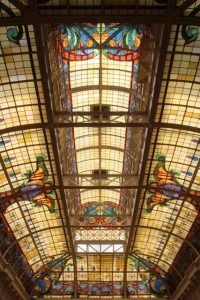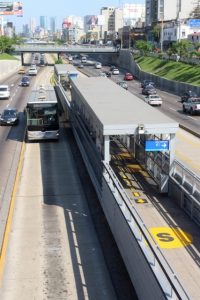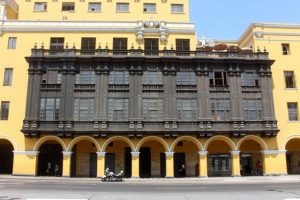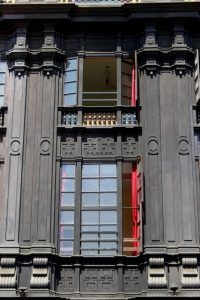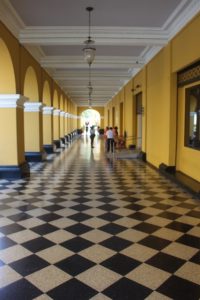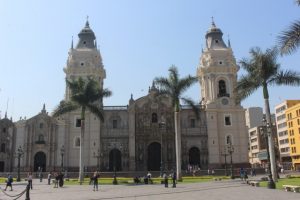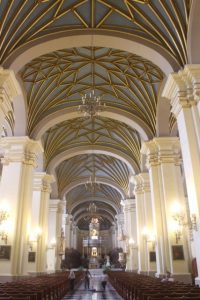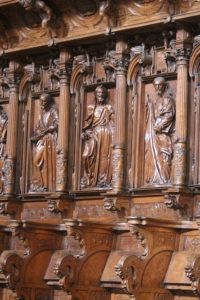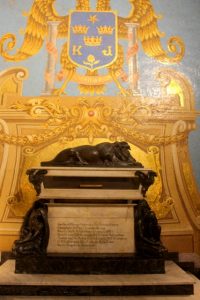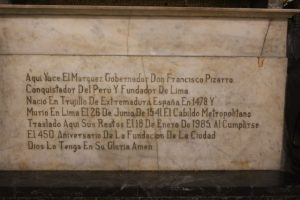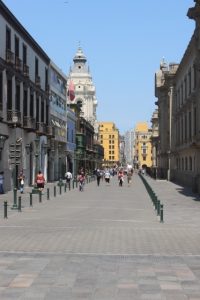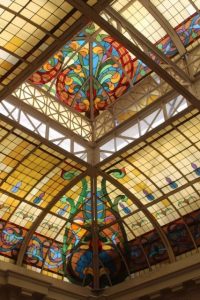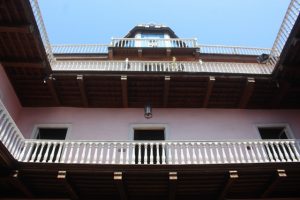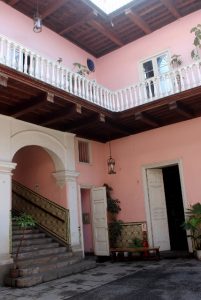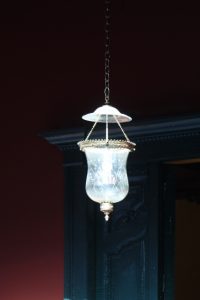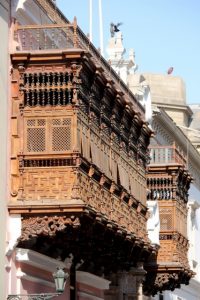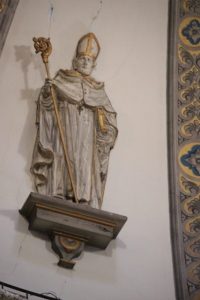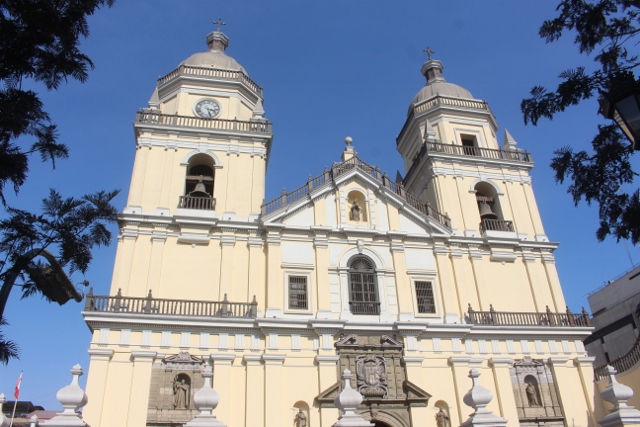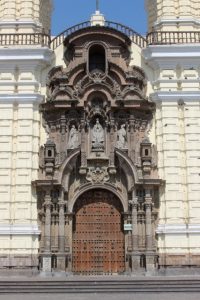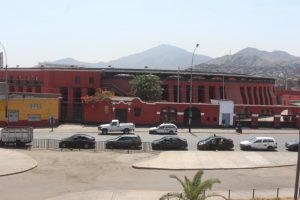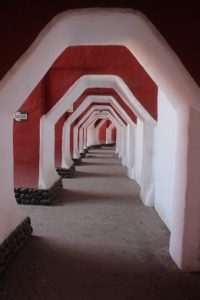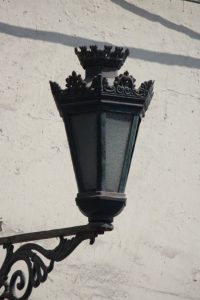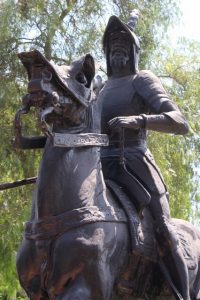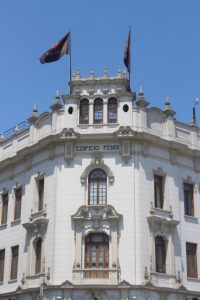The metropolis of Lima, the old Colonial capital, has a lot of predictable history, and at the same time many unexpected corners that make it such an attractive city.
Lima is our final destination of the trip. We have booked ourselves in an apart-hotel in Miraflores, the upmarket residential neighbourhood, with the idea that we don’t have to eat out every night, and can cook for ourselves, so once in a while. Except that our small apartment has a kitchen sink, a small fridge and a microwave, no more. The microwave is the only kitchen equipment we don’t own, never did – and don’t know how it works (it is not too difficult, actually).
To get to Lima, from Barranca which is less than 200 km away, it took more than four hours. Two-and-a-half to get to the outskirts, and the rest to get to the bus terminal in the centre of town. Traffic in this city is impossible. To alleviate this, a five-line metro network has been under development since the 1980s. Lots of problems, mostly on the financial side, means that now there is only one line operational, between seven stations, and only during the weekends from 10 am to 6 pm – utterly useless. In order to come up with something, the municipality decided to introduce the Metropolitana Bus Rapid Transit system, again with a number of routes, in 2006. Today, one of those is operational, and the good news is that it brings us from close to our apartment straight into the old colonial centre in 20 minutes. On its own dedicated lane, avoiding the traffic chaos.
Although Lima is one of the oldest cities in the Americas, founded in 1535 by that old rascal Pizarro as City of Kings, most of colonial Lima is 18th Century, rebuilt after a disastrous earthquake in 1746. And they did a good job: there is the fabulous Plaza de Armas, now called Plaza Mayor, partly surrounded by huge arcaded and balconied yellow buildings, by the cathedral, and by the, rather ugly, presidential residence, de Palacio de Gobierno. In the streets around the Plaza there are plenty of old houses. One, the Casa Alliaga, has been in the same family for, reputedly, sixteen generations, right from the time of the Conquistadores – which, once again, doesn’t seem to bother anybody here. Likewise, there is a statue of Francisco Pizarro in a park nearby, and his tomb in the cathedral is being venerated, in a separate chapel. Not a villain, then, but a national hero.
We find the old post office, and the old railway station, from where once a month the train to Huancayo departs, the highest railway in the world ascending to 4800 m, with tunnels, bridges, switch-backs, the whole lot. Unfortunately, the next ride is three days after we have left. Pity, I would have loved to ride this train. Most of the railway station, with its iconic glass roof, is now used as a library. Lesser colonial houses, with extensive stretches of wooden balconies, line some of the streets – the municipality-initiated program ‘adopt a balcony’, where people who can afford it ensure that the city’s balconies get repaired and maintained, obviously has been a great success. So once in a while a more important house appears, with elaborate courtyard and marble staircase; some of those can be visited, with a tour, but most are being used as offices. And then there are the churches, of course, the oldest one in Lima, Santo Domingo, the nicest one, San Pedro, the best-known one, the Convento of San Francisco, and many more, should you be interested in baroque church architecture.
Across the river is a more humble neighbourhood, and pretty unsafe if we may believe whoever we talk too, so not normally a part of our program. Except that the oldest bull ring in South America is located here, something I must see. The place is closed, of course, but with our proverbial luck, the caretaker was just letting a car out, and didn’t mind letting us in. Great place, finally somewhere we could wander around freely.
On our way back we reach Plaza San Martin, not only a hero in Argentina, but also honoured as one of the liberators of Peru. The square is newer, surrounded by early 20th century buildings, and in the streets around the houses are more run-down; the adopt-a-balcony scheme hasn’t arrived here yet. And the idea to walk on through the various parks failed, as somehow we didn’t manage to find an entrance that was open. We see plenty of people inside, but for one weird reason, most gates to the park are closed. Nearby is the national stadium, and the Metropolitana bus that wheezes us back to Miraflores in no time.
next: more Lima
